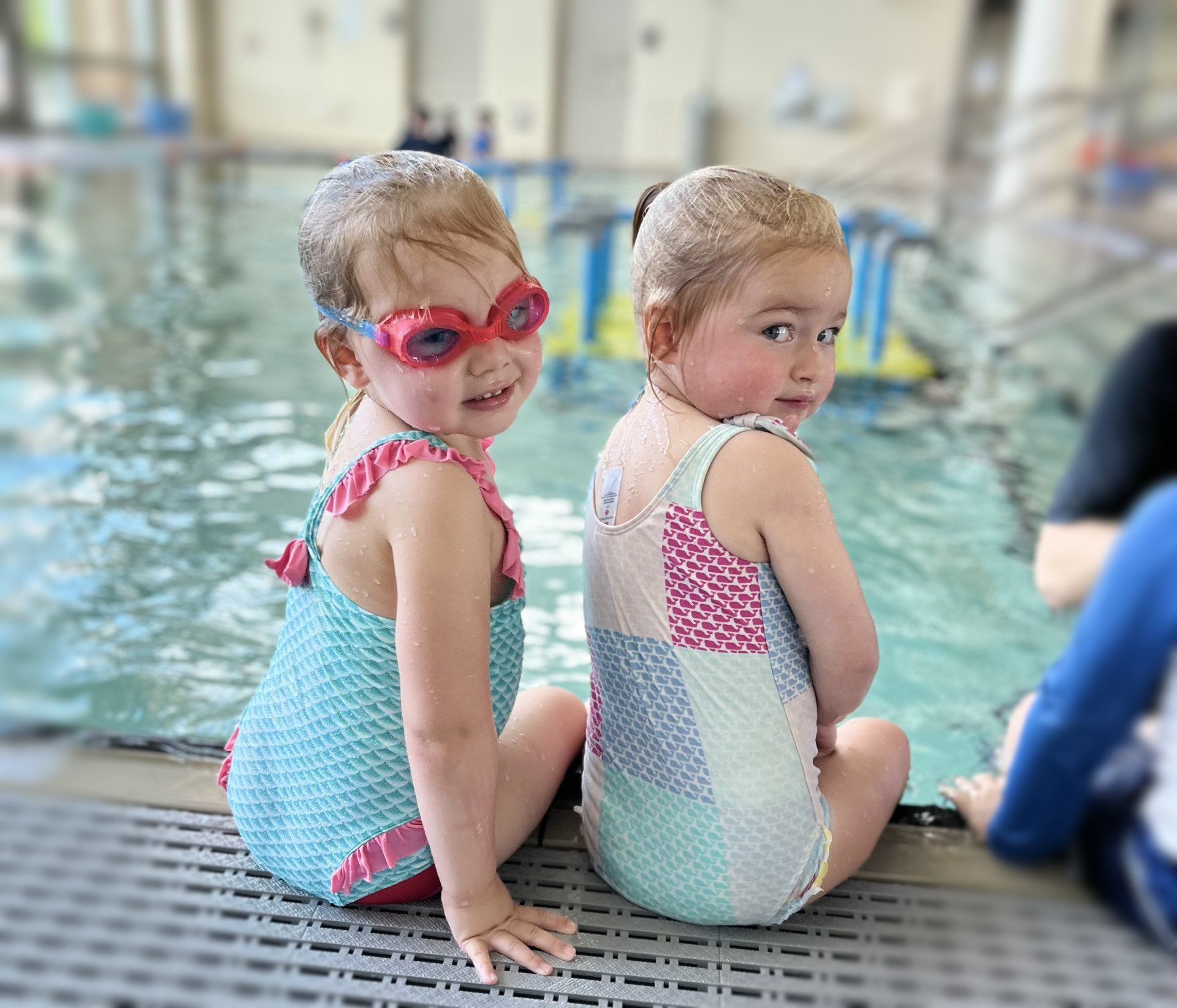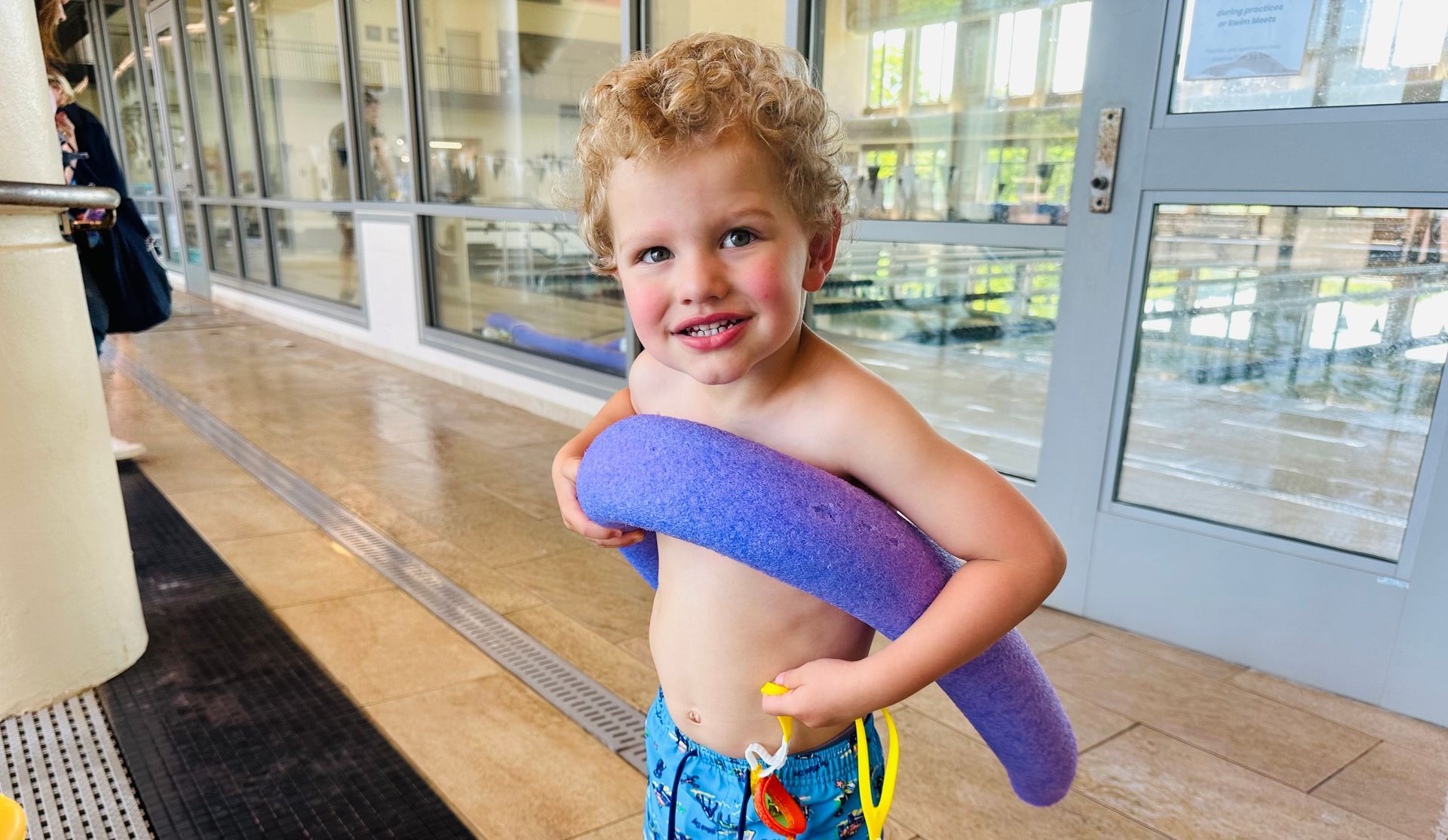
Prepare Your Toddler for Swim Lessons With Fun At-Home Activities
Prepare Your Toddler for Swim Lessons With Fun At-Home Activities

At Nashville Swim Academy, we know that every child approaches water differently—some dive right in, while others need a little extra encouragement. No matter where your child begins, there are simple and fun activities you can do at home to help them build confidence and foundational skills before starting swim lessons.
Breath Control: "Hold Your Bubble"
One of the first steps in learning to swim is understanding how to take a deep breath, fill the lungs with air, and hold it—allowing children to go underwater safely. This process can take time, but you can start at home by making it fun!
Use playful cues like, “Smell the roses, blow out the birthday candles,” to encourage deep breathing. Once your child is comfortable with that, progress to asking them to take a big breath in through their nose and close their lips like they’re holding an imaginary bubble in their mouth. Count together to see how long they can hold it.
This simple exercise helps children develop breath control, which is essential for swimming and going underwater comfortably and confidently.
Learning to Blow Out Like an Elephant
Blowing air out through the nose is a key skill for comfortable swimming, helping children clear any residual water that can cause discomfort. You can introduce this concept in a fun and easy way at home. Start by having your child take a deep breath through the mouth, then hum while keeping their lips closed. This naturally encourages air to exit through their nose.
Another great exercise is to blow a tissue away like an elephant—blow two times holding the tissue snug over your nose to blow and one time where you blow it away for fun. Practicing this skill helps children have successful underwaters, leading to another building block to confident swimming.
"Speaking Whale" to Get Ears in the Water
One common challenge for new swimmers is putting their ears underwater. You can make this a fun and silly game by pretending to "speak whale" like Dory from Finding Nemo! Submerge your mouth and chin in the water and make funny underwater sounds, then ask your child to listen with one ear in the water. As they grow more comfortable, encourage them to submerge both ears. This game helps kids get used to the muted sound of water while making the experience playful and engaging.
Car Ride Kicking Game for Leg Coordination
Swimming requires alternating kicks, a movement that might feel unfamiliar to toddlers. A great way to practice is during car rides! Play a simple version of Red Light–Green Light by telling your child to "kick, kick, kick" when you say "green light" and freeze when you say "red light." As they get better, add "yellow light" for slow kicks. We practice this very game in many of our Swim classes at NSA, as it helps with coordination, following directions, and building leg strength—all essential for learning to swim!
Making Water on the Face Feel Fun
Many young swimmers are hesitant to get their faces wet, so easing them into it at home can make swim lessons smoother. Try letting them play in the shower, a sprinkler, or even a gentle stream of water from a cup. The more exposure to the sensation of water, the less it impacts little senses. Early exposure to water all over the head and face will make for big strides in swim class as we introduce the amazing underwater world.
We encourage you to start this process as early as possible! Using the 1-2-3 cue and pouring water on the face from day one makes future water exposure a breeze. Fun Fact: Newborns innately hold their breath when water hits their face. It’s called the Mammalian Dive Reflex.
Building Confidence Through Floating in the Bathtub
Introducing floating in a familiar and comfortable space—like the bathtub—can help children feel more secure before they experience floating in a pool. Try filling the tub with just a small amount of water and encouraging your child to lie back while keeping their ears in the water. The walls of the tub provide a natural sense of security, making it easier for them to relax.
You can also make this exercise more engaging by pairing it with a song. Singing a short tune while they float helps them understand that floating has a beginning and an end, reinforcing patience and trust in the process. This simple activity can be a great stepping stone toward developing balance and buoyancy in swim lessons.
Preparing for Swim Lessons Starts at Home
Swim lessons provide critical water safety skills, but kids will feel more confident if they’ve already been exposed to some basic movements and sensations. These simple at-home activities help toddlers develop emotional and physical readiness, making their transition into swim lessons smoother.
As always, remember to supervise your child around any water, even small amounts. If you have questions about swim readiness, consult your pediatrician or reach out to our team at Nashville Swim Academy. We’re here to help every child build confidence, skill, and a lifelong love of swimming!
Share Article

NASHVILLE SWIM ACADEMY
C
R
E
A
T
I
N
G
A
L
I
F
E
L
O
N
G
L
O
V
E
F
O
R
T
H
E
W
A
T
E
R
C
R
E
A
T
I
N
G
A
L
I
F
E
L
O
N
G
L
O
V
E
F
O
R
T
H
E
W
A
T
E
R
L I F E L O N G
L O V E F O R
T H E W A T E R

QUICK LINKS

© 2024 Nashville Swim Academy - All Rights Reserved









